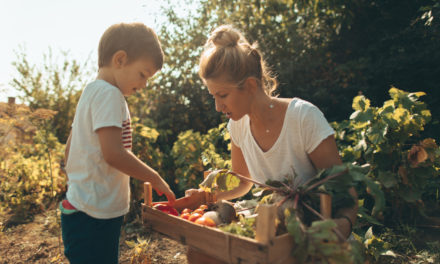Summer is the perfect season to create a succulent garden for indoors or out.
The colorful little plants, which come in all sorts of bizarre and beautiful shapes, add texture to a garden and don’t require lots of watering.
Most succulents do well with bright but not direct sunlight (which might scald the leaves), well-drained soil and high daytime temperature.
Customers of Summerland Gardens, 124 E. Cheyenne Road, seek out the little plants for indoor containers and outdoor planters this time of year, owner Julie McIntyre said.
McIntyre, a Colorado Springs native who has owned the business for 10 years, says she’s “a little wacky” for succulents, and keeps a good assortment at the gardening center.

Photo Credit: GrapeImages (iStock).
“For us, there’s kind of two kinds of succulents: the winter-hardy ones and the more tropical ones. People want to be sure which one they’re getting because if they plant the tropical ones outside, they won’t overwinter; others will,” she said.
Variety is key when building a succulent garden. For the outdoor, winter-hardy varieties, there are popular and beloved hens and chicks, which come in different iterations and do well in the Pikes Peak region.
Summerland has some of the 200 species of aloe vera, a succulent most people know. Also, “there are some plants called the living stones which mimic stones so when they’re in the wild they don’t get eaten. Some have translucent margins on the leaves so the little windows will photosynthesize when covered in sand. There are ones called cobwebs that have webbing on them so it looks like a spider’s web,” McIntyre said. “We have hundreds of different kinds of succulents, not just the ones you see at the grocery store. Some of the outdoor ones have pretty flowers and leaves, and make an interesting, eclectic mix, which I think is the allure. They’re so exotic and alluring, and they’re so forgiving.”
Part of the fun of choosing succulents for a planter or garden is mixing colors and shapes. The indoor and outdoor plants can grow together, but note that some of the tropical plants won’t survive winter outdoors.
“There are many different colors. We see a lot of the greens, but there’s a lot of silvers and blues too,” McIntyre said.
Succulents can be planted in little bowls or big planters or in the garden itself. Vertical gardening — in picture frames fitted with a mesh grid of sorts or pallets hung on a wall — is also a fun option to try with succulent cuttings. The soil is the key.

Photo Credit: Moses Talent (Flickr).
“Pay attention to the soil. Most of these plants are native to places where the soil is very well drained. You can put rocks in the bottom of the pot, but if you’re using a good succulent mix (for soil) it’s not as crucial,” McIntyre said.
As for watering, it’s best to wait until the plants are dry.
“Plants may require weekly (or more) saturation waterings during the spring and summer and only occasional light waterings during the fall and winter. Beginners may find a moisture meter helpful. Experience is the best teacher with respect to timing, frequency and amount of water. Watch your plants. They can tell you a great deal about their needs,” states the Colorado Cactus and Succulent Society website coloradocactus.org
“A lot of people, with the watering needs and the heat, if you need a centerpiece on your outdoor patio table and it’s sunny there, you’re maybe forgoing a basil plant and going for a tougher succulent. The cool thing is they trail over the pot. They don’t grow that tall, and lend themselves to the table,” McIntyre said.
When buying succulents, it pays to buy them from a store where employees know the plants well, she said. The gardening experts at Summerland can put a succulent container together for you, or help you assemble one.
“The selection at an independent garden center is going to be a lot bigger. We try to do the really oddball stuff. Plus, we can show customers the different varieties of plants and help them design it if they want that. We’ll even plant it up for them if they want,” McIntyre said.

 Succulents, Photo Credit: hudiemm (iStock).
Succulents, Photo Credit: hudiemm (iStock). 



Comment on: Everything You Need To Know About Growing Succulents